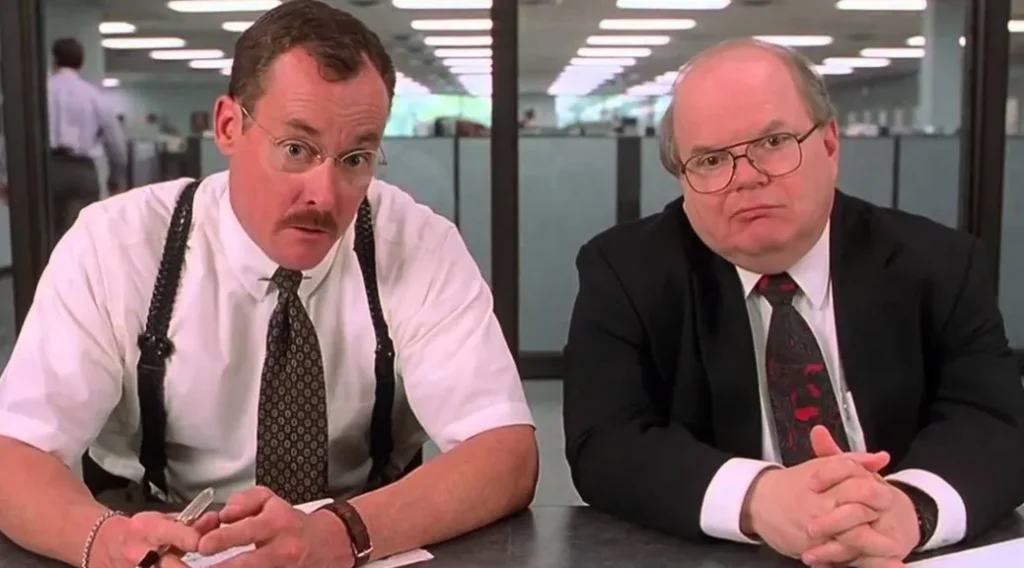When organizations roll out a new change program or go through an organizational restructuring, they usually include a statement that goes something like, “when we’re on the other side of this change, everything will be different, better, more productive.” Sounds great—it’s just getting to the other side that’s the challenge.
To help teams adapt to these changes, various consultancies have developed their own change management models: Kotter, ADKAR, Bridges, and so on. Each model has its own value and strengths, but they also contain assumptions that don’t reflect the true nature of organizational and cultural change. We’ve detailed ten of the most popular models below, and why they can make change management difficult to lead.
The 10 Most Popular Change Management Models
1. Lewin’s Change Management Model
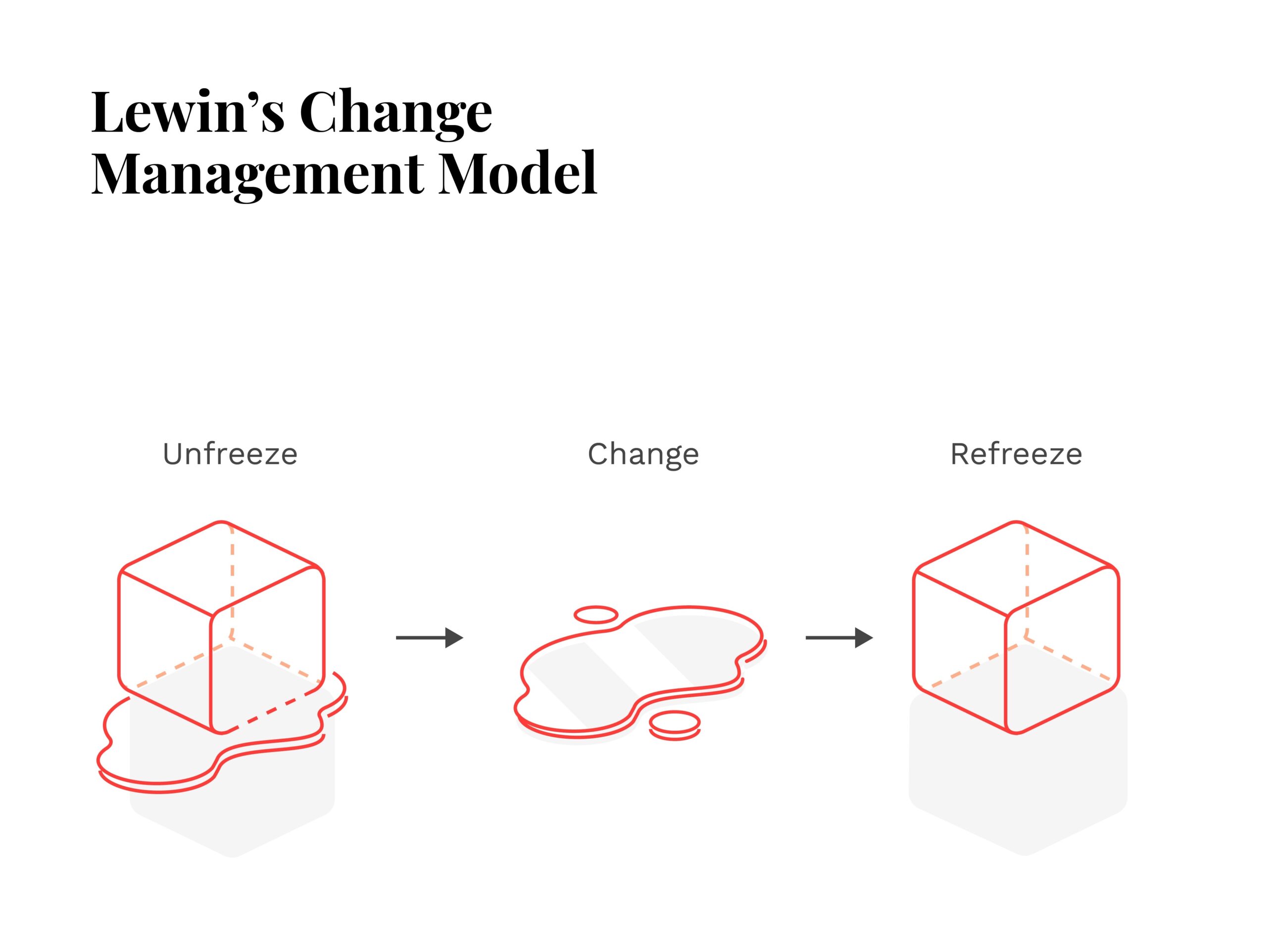
Lewin’s Change Management Model uses a block of ice as a metaphor for the organization. Just as you need to melt and refreeze ice if you want to change its shape, you must “unfreeze, change, and refreeze” companies through a change process:
- During the “Unfreeze” stage, you evaluate the change and prepare the company
- In “Change,” you roll out the change and communications
- During “Refreeze,” you incorporate these changes into the new status quo
The creator of this model, Kurt Lewin, was a key influencer in early change management and organization development, and emphasized the influence of group behavior on change effectiveness. He wanted to create a simple model that accounted for company culture and behavior, and used the “Refreeze” stage as a way to ensure change sticks.
Lewin’s model is still referenced today, but is widely acknowledged as an over-simplification of today’s change management processes. It’s beneficial as an easy-to-understand metaphor for change, but doesn’t account for the complexity found in today’s organizations, nor does it provide enough of a flexible, detailed approach for leaders implementing change.
2. McKinsey 7-S Model
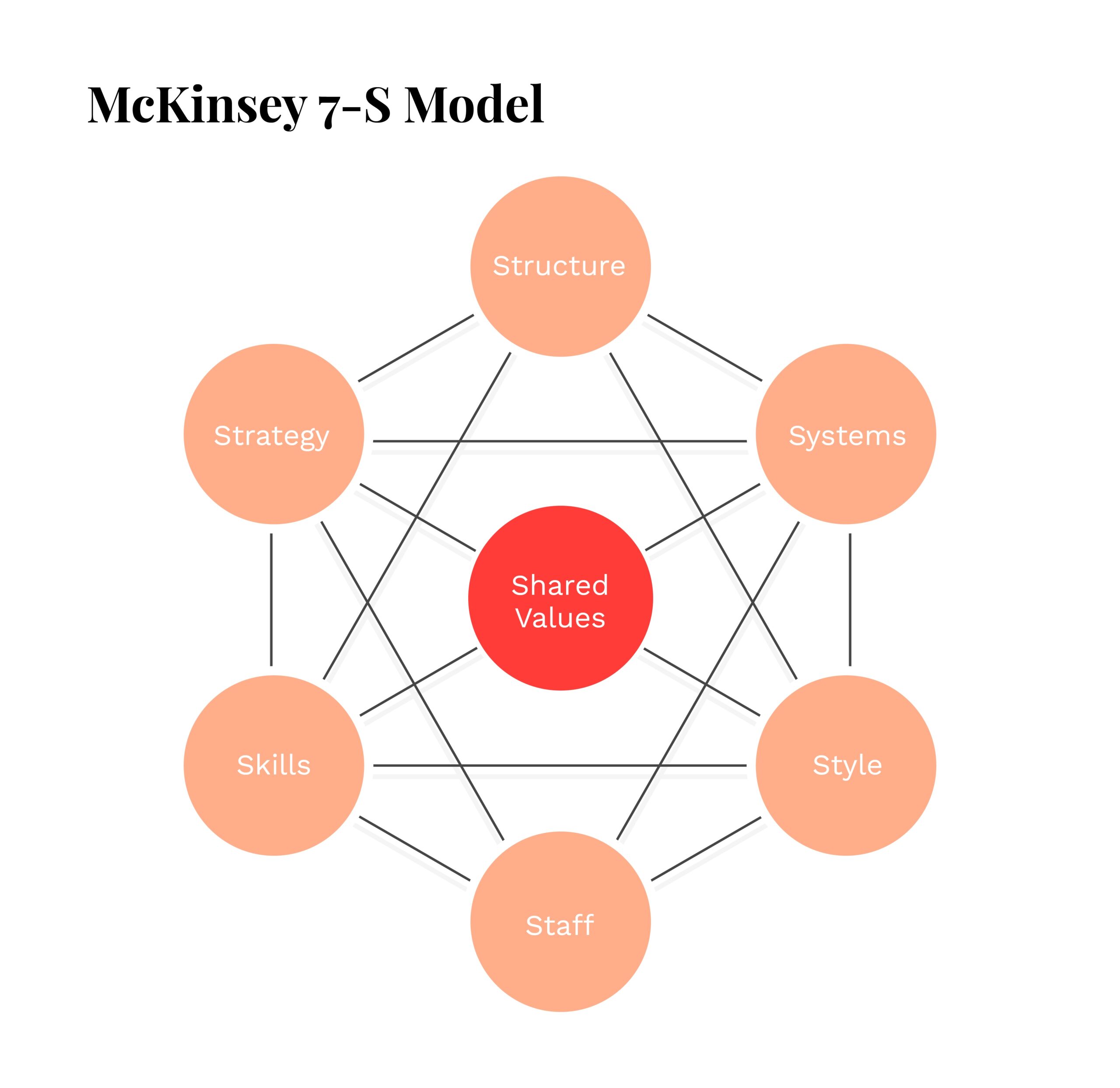
McKinsey 7-S is more of a strategy model than a true change model, but can be a valuable tool for assessing the full system in service of a change. The model uses seven categories of organizational elements to map how an organization becomes effective:
- Strategy
- Structure
- Systems
- Skills
- Staff
- Style
- Shared Values
Developed by McKinsey & Company in the 1970s, the 7-S model was intended as a tool to diagnose organizational issues and identify what to change, keeping a close eye on how those elements interact. The categories are equally weighted, and a challenge in one area will impact another.
More recently, it has been used as a change management model to help companies understand the factors at play within a specific change. It’s a great choice for diagnosing the interrelated factors within a change initiative, but it doesn’t tell you what to do with that information. If you want to facilitate a change management process, you’ll need to supplement this tool.
3. Nudge Theory

Nudge Theory is a concept that proposes making small changes to an environment can influence individuals’ choices—otherwise known as “choice architecture.” A classic example is how organizations have shifted from encouraging employees to opt into retirement plans, to enrolling them automatically and allowing them to opt-out.
Made famous by professor of economics and behavioral science Richard Thaler and Cass Sunstein, it also draws heavily from the work of psychologist Daniel Kahneman, who identified two types of thinking: System 1, or instinctive thinking, and System 2, logical thinking. Under the assumption that people typically make decisions “with their gut” (System 1 thinking), organizations should make choices easier or more obvious, to encourage people to adopt them, rather than be forced by edict or regulation.
These change theories are certainly helpful when designing ways of working —how can we make it easier for people to do things the “right” way?—and can generate short term wins. But it doesn’t address how leaders can determine if the behavior it creates is in fact a desired outcome, or whether the behavioral change is sustainable or scalable.
4. The ADKAR Change Management Model

The ADKAR (Awareness, Desire, Knowledge, Ability, and Reinforcement) model aims at assessing, measuring, and preparing for the individual change that accompanies large-scale change. A component of the Prosci change management framework, it’s become a common shorthand for addressing the change experience.
During organizational change, it’s presumed all the people involved are in one of these stages—so a leader or practitioner can then determine the best steps for getting that person to the next change stage. For example, if someone is in the “Desire” stage, they may be excited about the change and ready to start, but they aren’t yet to “Knowledge,” meaning that they don’t yet know how to change.
The simplicity and memorable nature of the ADKAR model has power. It provides practitioners with an incredible tool for assessing change readiness at the individual level—but, especially for large companies, practitioners need to be able assess change at an organizational level. More importantly, the ADKAR model doesn’t account for the environment and company culture, which can also impact their ability to change.
5. The Kübler Ross Change Curve
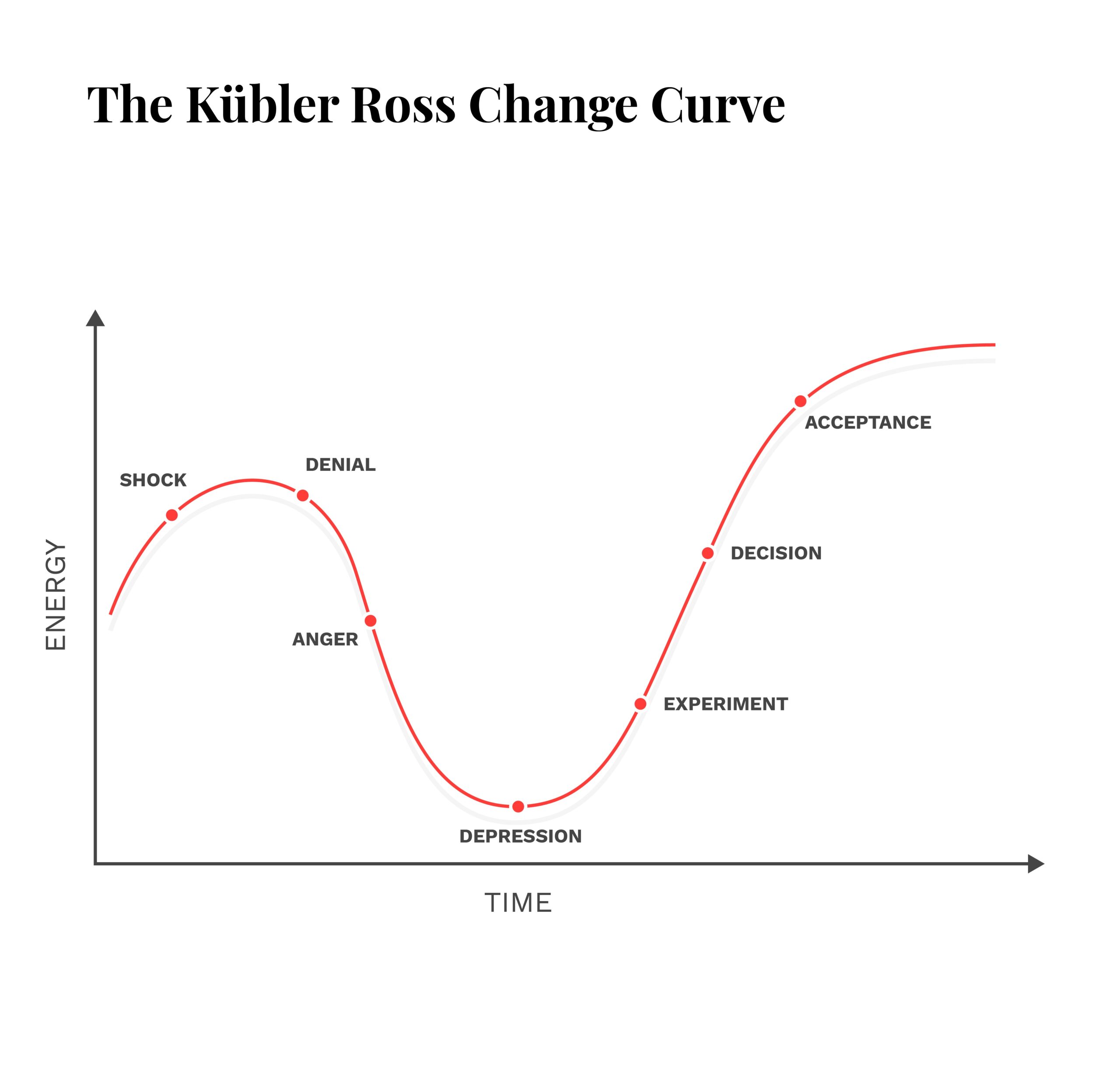
If you’ve ever heard the term “change curve,” it’s largely due to Elisabeth Kübler-Ross’s work. This psychological model outlines the emotional reaction most people go through when confronted with a change, loss, or otherwise surprising event. It maps an experience from learning about the change (shock, denial) to feeling the initial negative effects (frustration, depression), to processing the change (experiment), to finally integrating the change into the new reality (decision, integration).
The model was created in concert with research on death and grief, and was one of the first to truly highlight the intensity of the change experience. Leaders can use the change curve to practice empathy and recognize how employees process change, while individuals can find it comforting to learn that their emotional experience during a change is completely normal. But it doesn’t address how to implement change, and in some cases, doesn’t acknowledge the breadth of experiences possible.
6. Bridges’ Transition Model
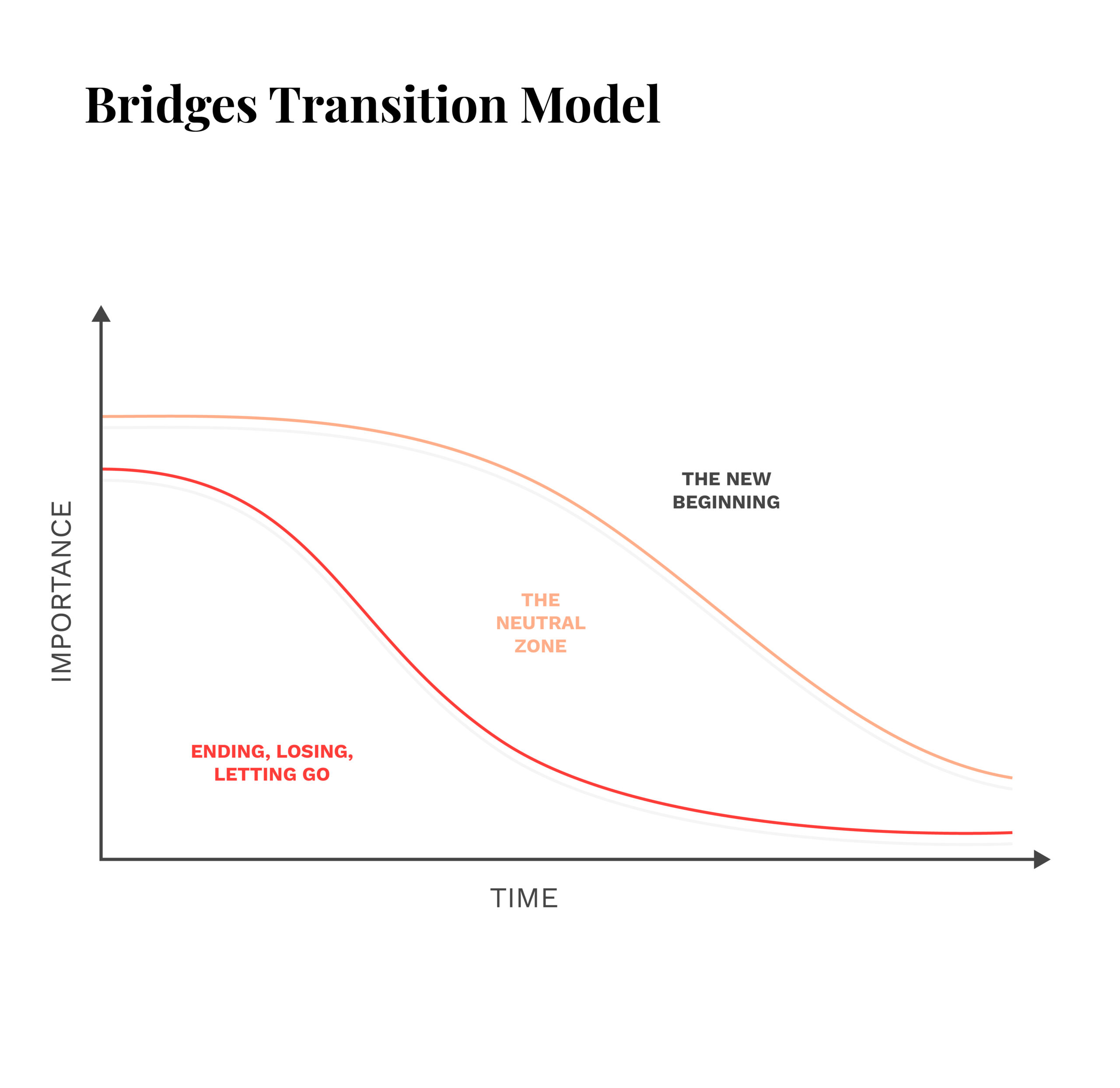
The Bridges’ Transition Model outlines the three stages that people go through during a transition:
- The first stage is ending, losing, and letting go. This acknowledges that change feels like loss to individuals.
- The second stage is the neutral zone. In this stage, people can often feel frustrated by the change, and even lose productivity or motivation to do their work.
- The third stage is the “New Beginning.” This is where people are invested in the change, and begin to create their own path.
Originally included in William Bridges’ 1991 book Managing Transitions, its framing of the transition process was pivotal to understanding that change isn’t just a moment in time.
The Bridges’ Transition Model is helpful for understanding change as an inner psychological process for those involved. Similar to Lewin’s Change Management Model, it is simple and easy to understand, but tends to reduce a lot of complexity into a tiny three-step process. And while meant to be very much about the human experience, it can still sometimes feel very corporate and process-oriented.
7. Satir Change Management Model
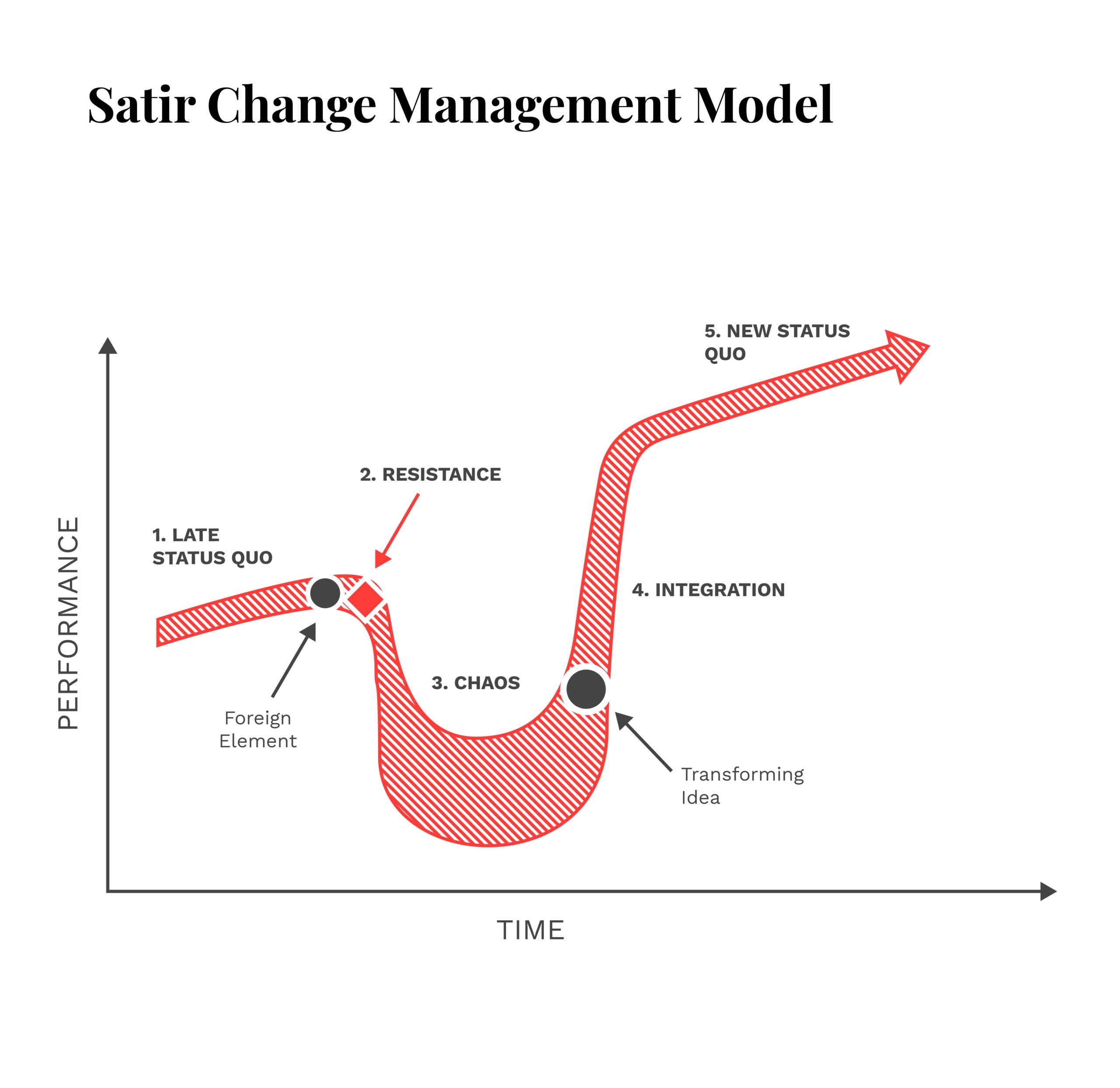
Family therapist Virginia Satir developed the Satir Model to help people cope with change at an individual, inner level. Like the Kübler Ross Change Curve, it maps sentiment over time and acknowledges that things often get worse before they get better. The stages move from resistance and chaos to integration and finally, to the new status quo.
Like other individual change models, the Satir Model helps to simplify the inner process of someone going through change. But perhaps even more than other change management models, it emphasizes change as a one-time event that is surprising or unexpected. In organizations, change management should involve more people up front, and be less of a surprise, so this model’s relevance has come under question.
8. Kotter’s Theory

John Kotter’s 8-step change model comes from his book “Leading Change,” widely considered a foundational book in the field of change management. Kotter’s Theory is an easy-to-follow roadmap for leaders who want to ensure they are taking the right steps as they plan and manage change. The eight steps are:
- Create Urgency
- Put a Team Together
- Develop Vision and Strategies
- Communicate the Change Vision
- Remove Obstacles
- Set Short-Term Goals
- Keep the Momentum
- Make the Change Stick
As more leaders recognized that change was becoming a constant, as well as the acknowledgment that change initiatives often fail, Kotter became a thought leader in encouraging a planned, intentional change process. The steps give leaders and practitioners clear steps to follow, and the beginning steps allow for a smooth entry into the implementation phase.
Unfortunately, the model also has drawbacks for modern change initiatives. While it encourages inclusion where possible, the model is quite traditionally top-down. It can be considered quite rigid when it comes to the 8 steps, lacking flexibility needed for most change projects. And most importantly, Kotter’s continued focus on a sense of urgency can read as naive when it comes to the realities of employees.
9. Maurer 3 Levels of Resistance and Change Model

Author and consultant Rick Maurer developed a change management model for understanding why people resist change:
- I don’t understand it
- I don’t like it
- I don’t like/trust you
With this framing, leader create more effective plans: education and adequate training can address the lack of understanding, incentives and value proposition clarity can increase change desire, and trust building can resolve the lack of relational trust.
This framing allows organizations to look more deeply at their culture and understand why change initiatives are failing, but being so focused on resistance means it has a lot of limitations. To succeed, organizational change needs a holistic view, and just focusing on resistance can be reductive.
10. Deming Cycle (PDCA)
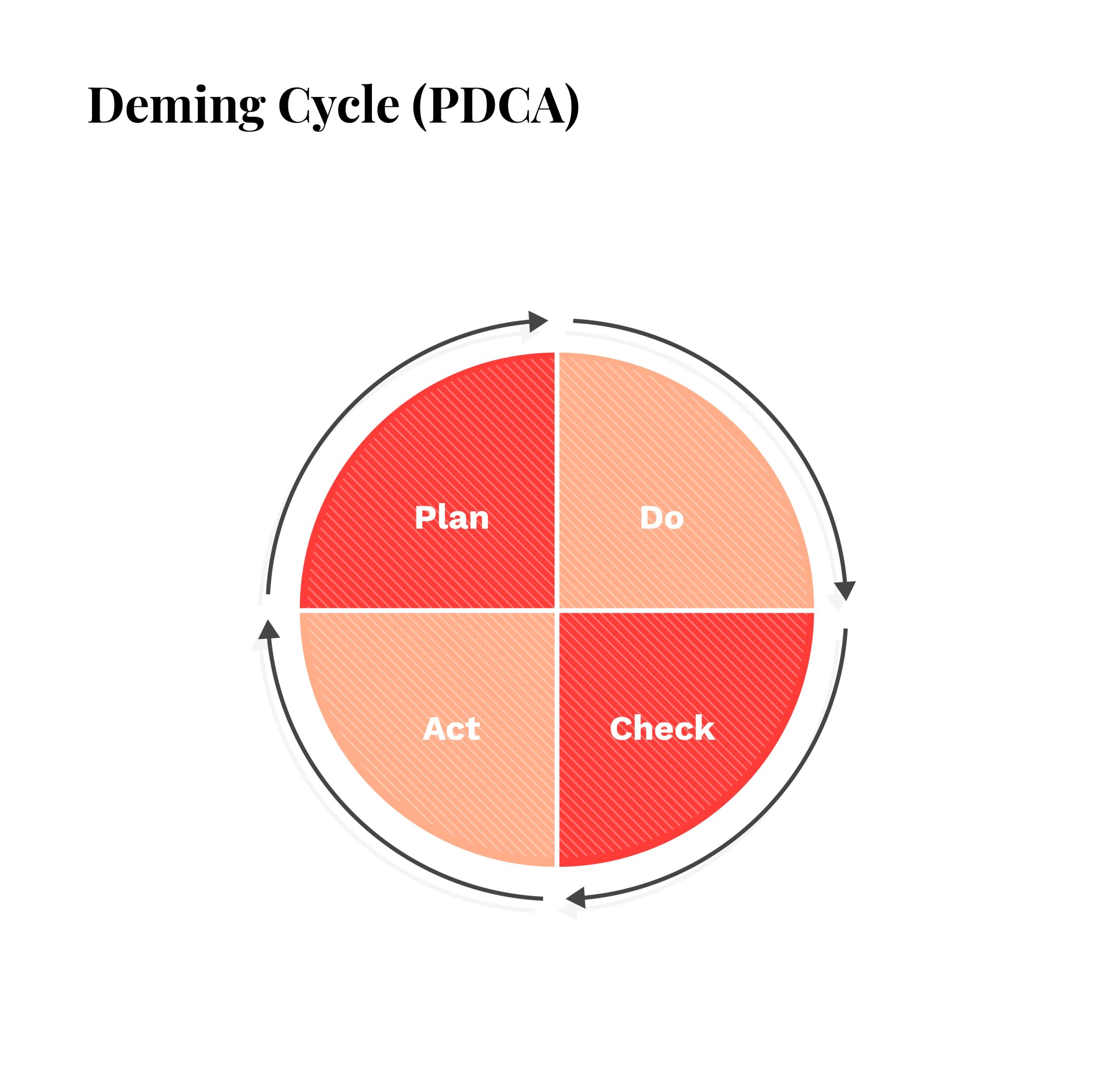
W. Edwards Deming developed the Deming Cycle in the 1950s as a business process improvement model. The acronym PDCA stands for “Plan, Do, Check, Act”—an easy to remember process for problem solving:
- Plan: Understand the definition of quality and create mechanisms for experimentation
- Do: Start small scale tests, with documentation at every stage
- Check: Identify where the outcomes were met or not met by the experiment
- Act: Implement the changes
This was one of the first circular models to really look at customer experience and use iteration to solve problems. More change processes could use this kind of experimentation, but as it was originally meant for production environments, the scope of this tool’s usefulness is limited.
The Faulty Assumptions Underlying these Methods
Viewed holistically, it’s clear that while these models all bring unique perspectives to organizational change management, they share a variety of assumptions that hold them back from fully successful implementation.
Assumption #1: Change is a singular moment in time
As evidenced by the idea that we can get to the “other” side of change, most change management models assume some kind of linear path, going from the beginning of the change process to the end, where it stops, and everything is better. Any diversions from this path are accounted for by saying you may need to “go back a step in the process” before proceeding.
We believe change is a dynamic, non-linear process. As much as teams might like to believe there’s a promised land where everything is better, realistically, there is no arrival point, no time when change officially “ends,” nor does it occur in a straight line. Change happens at different speeds, at different times, and in different places within every different organization.
Assumption #2: Change happens in closed systems
Most change management models believe organizational change can be constrained within some kind of boundary, where very little gets in, and almost nothing gets out. You can recognize this assumption when people say things like, “I’m not sure they’ll be affected by this,” or “our customers shouldn’t see a difference in the way we operate.”
We believe change happens in an open system. All of the elements within the system are being influenced by elements outside of the system, and these elements have the potential to influence each other. This view means that change happens in a web of influences, and identifying a “root cause” becomes very difficult.
Assumption #3: Change leadership is top-down
Change is led from the top and pushed to the bottom. There is almost always a slide in the deck of a waterfall, indicating the torrent of constant communication being proposed to ensure everyone knows about the change.
We believe change leadership comes from many angles. Sure, change leadership can happen in the traditional top-down direction, but for change to stick, change leadership should be re-oriented to address how change incorporates a bottom up method, as well as the middle, out. Change requires leadership that can meet the change where it occurs and works toward sustainability, which requires leadership throughout the organization.
Assumption #4: Change is complicated, but can be simplified
Traditional change management models also assume that change is complicated, but if we communicate enough, we can influence the organization’s attitudes about that change so it becomes significantly more simple.
We believe change is complex and emergent. Beyond communications and attitudes, change is about behaviors and actions. When change begins in one part of an organization, it will undoubtedly begin to influence other parts of the organization, and emergent and unpredictable things may occur.
Assumption #5: The “right” change has been identified
Finally, change management models assume they have identified the right problem to solve before the change process begins.
We believe change starts with a hypothesis. We begin with the assumption that we have a poorly defined or unclear understanding of the problem we are attempting to solve with a change initiative. The problem will also morph as the systems, patterns of behavior, and communication begin to change. As the problem changes, so should the approach.
Assumption #6: There’s a singular model that can be applied to all change initiatives.
What organizations really need is to know when to apply different types of change, and how to switch between change management models. Furthermore, a big, discrete event like an organizational restructuring or a new strategic vision might call for one model, but to change how people work together within that new structure, you’ll need to adopt a different approach.
A New Approach to Successful Change Management
Through our work leading hundreds of organizations through the change management process, we’ve developed our own change management model that avoids these common pitfalls and results in real, meaningful, and continuous change; we call it Change Making.

Want to learn more? Get in touch.



